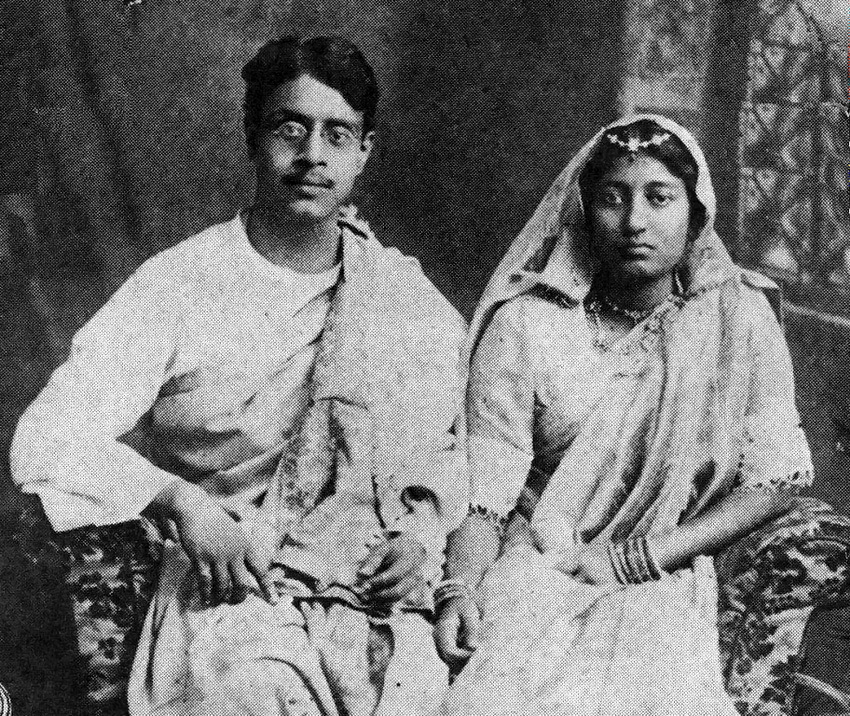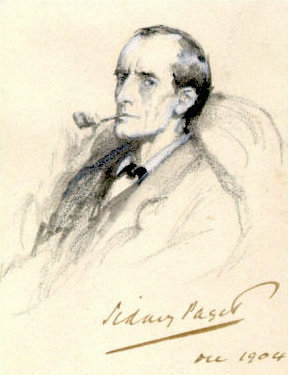|
Gosainpur Sargaram
''Gosainpur Sargaram'' is a detective story written by Satyajit Ray starring his famous characters Feluda and Topshe. It was first published in Sandesh in 1976. Plot Feluda is called to Gosaipur by Jiban Mallick, the son of the local Zamindar A zamindar in the Indian subcontinent was an autonomous or semi-autonomous feudal lord of a ''zamindari'' (feudal estate). The term itself came into use during the Mughal Empire, when Persian was the official language; ''zamindar'' is the ... Shyamlal Mallick to investigate a threat of his father's life. Everyone in the village knows that father and the son are at loggerheads. Shyamlal is also an eccentric who eschews anything modern. Then, instead of Syamlal, his son Jiban Mallick is killed and the wealth of Mallick's looted. Oddly though, the dead body of Jiban Mallick vanishes, only to reappear again. Feluda works this out with a mixture of investigating skills and deception. The oxymoric title adds a lot to the story. Adaptat ... [...More Info...] [...Related Items...] OR: [Wikipedia] [Google] [Baidu] |
Satyajit Ray
Satyajit Ray (; 2 May 1921 – 23 April 1992) was an Indian film director, screenwriter, author, lyricist, magazine editor, illustrator, calligraphy, calligrapher, and composer. He is widely considered to be one of the greatest and most influential film directors in the history of cinema. He is celebrated for works including ''The Apu Trilogy'' (1955–1959), Jalsaghar, ''The Music Room'' (1958), Mahanagar, ''The Big City'' (1963)'', Charulata'' (1964), and the ''Goopy–Bagha'' trilogy (1969–1992). Ray was born in Calcutta to author Sukumar Ray and Suprabha Ray. Starting his career as a commercial artist, Ray was drawn into independent film, independent film-making after meeting French filmmaker Jean Renoir and viewing Vittorio De Sica's Italian neorealism, Italian neorealist film ''Bicycle Thieves'' (1948) during a visit to London. Ray directed 36 films, including feature films, documentaries, and short subject, shorts. Ray's first film, (1955), won eleven international ... [...More Info...] [...Related Items...] OR: [Wikipedia] [Google] [Baidu] |
Feluda
Feluda is a fictional detective, private investigator created by Indian director and writer Satyajit Ray. Feluda resides at 21 Rajani Sen Road, Ballygunge, Calcutta, West Bengal, India. Feluda first made his appearance in a Bengali children's magazine called '' Sandesh'' in 1965, under the editorialship of Ray and Subhas Mukhopadhyay. His first adventure was '' Feludar Goendagiri''. Feluda is one of the most impactful Bengali characters of all time. Feluda is often accompanied by his cousin, who is also his assistant, Tapesh Ranjan Mitter (affectionately called Topshe by Feluda), who serves as the narrator of the stories. From the sixth story, '' Sonar Kella'' (The Golden Fortress), the duo are joined by a popular thriller writer Jatayu (Lalmohan Ganguli). Feluda has had been filmed at times, with the character been played by Soumitra Chatterjee, Sabyasachi Chakrabarty, Ahmed Rubel, Shashi Kapoor, Abir Chatterjee, Parambrata Chatterjee, Tota Roy Chowdhury and I ... [...More Info...] [...Related Items...] OR: [Wikipedia] [Google] [Baidu] |
Topshe
Feluda is a fictional detective, private investigator created by Indian director and writer Satyajit Ray. Feluda resides at 21 Rajani Sen Road, Ballygunge, Calcutta, West Bengal, India. Feluda first made his appearance in a Bengali children's magazine called '' Sandesh'' in 1965, under the editorialship of Ray and Subhas Mukhopadhyay. His first adventure was '' Feludar Goendagiri''. Feluda is one of the most impactful Bengali characters of all time. Feluda is often accompanied by his cousin, who is also his assistant, Tapesh Ranjan Mitter (affectionately called Topshe by Feluda), who serves as the narrator of the stories. From the sixth story, ''Sonar Kella'' (The Golden Fortress), the duo are joined by a popular thriller writer Jatayu (Lalmohan Ganguli). Feluda has had been filmed at times, with the character been played by Soumitra Chatterjee, Sabyasachi Chakrabarty, Ahmed Rubel, Shashi Kapoor, Abir Chatterjee, Parambrata Chatterjee, Tota Roy Chowdhury and Indraneil Seng ... [...More Info...] [...Related Items...] OR: [Wikipedia] [Google] [Baidu] |
Sandesh (magazine)
''Sandesh'' (, ) is a centenary old Bengali children's magazine. It was first published by Upendrakishore Ray in 1913 through his publishing company, M/s U. Ray and Sons. The original partners of the venture were Upendrakishore and his sons Sukumar and Subinoy. Its publication had to be stopped twice. The current phase is the third and longest running one, spanning more than 60 years. Beginning The magazine was first published from its office in 22, Sukea Street. Subsequently the office and the press were shifted to the new building built by Upendrakishore at 100, Garpar Road. Upendrakishore's son Sukumar Ray went to Great Britain for advanced training in printing technology, and he joined as an active partner after his return. After the death of Upendrakishore Roychowdhury in 1915, his eldest son Sukumar Ray succeeded as the editor of the magazine in 1915. Sukumar was known for his humorous writings. The Sukumar Ray years established ''Sandesh'' as a magazine that co ... [...More Info...] [...Related Items...] OR: [Wikipedia] [Google] [Baidu] |
Zamindar
A zamindar in the Indian subcontinent was an autonomous or semi-autonomous feudal lord of a ''zamindari'' (feudal estate). The term itself came into use during the Mughal Empire, when Persian was the official language; ''zamindar'' is the Persian for ''landowner''. During the British Raj, the British began using it as a local synonym for "estate". Zamindars as a class were equivalent to lords and barons; in some cases, they were independent sovereign princes. Similarly, their holdings were typically hereditary and came with the right to collect taxes on behalf of imperial courts or for military purposes. During the Mughal Empire, as well as the British rule, zamindars were the land-owning nobility of the Indian subcontinent and formed the ruling class. Emperor Akbar granted them mansabs and their ancestral domains were treated as jagirs. Most of the big zamindars belonged to the Hindu high-caste, usually Brahmin, Rajput, Bhumihar, or Kayastha. During the colonial era, ... [...More Info...] [...Related Items...] OR: [Wikipedia] [Google] [Baidu] |
Detective Fiction
Detective fiction is a subgenre of crime fiction and mystery fiction in which an criminal investigation, investigator or a detective—whether professional, amateur or retired—investigates a crime, often murder. The detective genre began around the same time as speculative fiction and other genre fiction in the mid-nineteenth century and has remained extremely popular, particularly in novels. Some of the most famous heroes of detective fiction include C. Auguste Dupin, Sherlock Holmes, Kogoro Akechi, Miss Marple and Hercule Poirot. Juvenile stories featuring The Hardy Boys, Nancy Drew, and The Boxcar Children have also remained in print for several decades. History Ancient Some scholars, such as R. H. Pfeiffer, have suggested that certain ancient and religious texts bear similarities to what would later be called detective fiction. In the Old Testament story of Susanna (Book of Daniel: 13), Susanna and the Elders (the Protestant Bible locates this story within the apocrypha), t ... [...More Info...] [...Related Items...] OR: [Wikipedia] [Google] [Baidu] |
Novels By Satyajit Ray
A novel is an extended work of narrative fiction usually written in prose and published as a book. The word derives from the for 'new', 'news', or 'short story (of something new)', itself from the , a singular noun use of the neuter plural of ''novellus'', diminutive of ''novus'', meaning 'new'. According to Margaret Doody, the novel has "a continuous and comprehensive history of about two thousand years", with its origins in the Ancient Greek and Roman novel, Medieval Chivalric romance, and the tradition of the Italian Renaissance novella.Margaret Anne Doody''The True Story of the Novel'' New Brunswick, NJ: Rutgers University Press, 1996, rept. 1997, p. 1. Retrieved 25 April 2014. The ancient romance form was revived by Romanticism, in the historical romances of Walter Scott and the Gothic novel. Some novelists, including Nathaniel Hawthorne, Herman Melville, Ann Radcliffe, and John Cowper Powys, preferred the term ''romance''. Such romances should not be confused with the ... [...More Info...] [...Related Items...] OR: [Wikipedia] [Google] [Baidu] |
1976 Short Stories
Events January * January 2 – The International Covenant on Economic, Social and Cultural Rights enters into force. * January 5 – The Pol Pot regime proclaims a new constitution for Democratic Kampuchea. * January 18 – Full diplomatic relations are established between Bangladesh and Pakistan 5 years after the Bangladesh Liberation War. * January 27 ** The United States vetoes a United Nations resolution that calls for an independent Palestinian state. ** The First Battle of Amgala (1976), First Battle of Amgala breaks out between Morocco and Algeria in the Spanish Sahara. February * February 4 ** The 1976 Winter Olympics begin in Innsbruck, Austria. ** The 7.5 1976 Guatemala earthquake, Guatemala earthquake affects Guatemala and Honduras with a maximum Mercalli intensity of IX (''Violent''), leaving 23,000 dead and 76,000 injured. * February 9 – The Australian Defence Force is formed by unification of the Australian Army, the Royal Australian Navy and the Royal Au ... [...More Info...] [...Related Items...] OR: [Wikipedia] [Google] [Baidu] |





